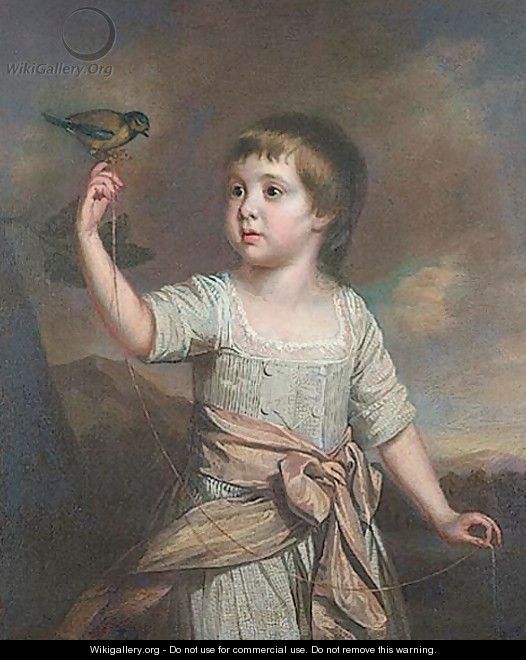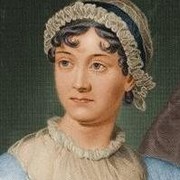Born in Edinburgh, Scotland May 5, 1786, Sarah Clementina (or Clementina Sarah) was the daughter of James Drummond, Lord Perth, Baron Drummond of Stobhall and the Honorable Clementina Elphinstone. The Drummond family was a noble family of Perthshire, who were loyal to the Jacobite cause. After the Rising in 1715, the 4th Earl Drummond was attainted and the estates and title were lost (although still considered valid by the Jacobites in exile). Clementina’s father obtained restoration of the estates in 1787, but the title was not restored; he was created 1st Lord Perth and Baron Stobhouse by George III in 1797 (he was considered the 11th earl de jure by the Jacobites in exile)*. Clementina was the only surviving child and heir. A number of compositions for dances were named for her, including “Clementina Sarah Drummond”, a strathspey by John Bowie published in 1789, and “Miss Sarah Drummond of Perth”, another strathspey. On her father’s death in 1800, she inherited a large fortune and estates in Perthshire.
On October 19, 1807, at age 21, Clementina married the Honorable Peter Burrell, who was the son of Sir Peter Burrell, 2nd Baronet Burell of Knipp and subsequently Baron Gwyndir, and Lady Priscilla Bertie, 21st Baroness Willoughby de Eresby and the daughter of the 3rd Duke of Ancaster. His family had no money to speak of. On November 5, 1807, the couple took the name of Drummond-Burrell by royal license. This was supposedly at her father’s insistence but, since he died in 1800, this may have been a requirement of her marriage settlement or her own request. (I also saw an indication that this may have been at his father’s request.) In any case, the couple became Mr. and Mrs. Drummond-Burrell. Initially, at least, they lived at Drummond Castle.

Peter Drummond-Burrell was a great dandy, and a member of Brooks’s Club (a Whig stronghold), and had been working toward a political career. He was elected Member of Parliament for Boston in Lincolnshire in April 1812, and usually voted with the opposition, although his attendance was not steady. Clementina was an active hostess, noted for her parties. By 1814, according to Captain Gronow, Clementina was one of the patronesses of Almack’s Assembly Rooms. She had the reputation of being the highest stickler, very proud, and very grand. In FRIDAY’S CHILD, Georgette Heyer described her as “the most coldly correct of Almack’s patronesses….”
There are some implications that this was not a particularly happy marriage. Peter Drummond-Burrell was expensive, and his father was in debt; Clementina’s reputation for grandeur and shrewdness would not indicate a “soft touch” for cash. However, after 1808, they appear to be fixed in London and very busy with their social and personal lives. The couple had five children: Clementina Elizabeth, born Sept. 2, 1809 in Piccadilly, Westminster; Elizabeth Susan, born Sept. 21, 1810 in Westminster, Charlotte Augusta born Nov. 3, 1815 in Berkley Square; Frederick, born Feb. 4, 1818 in Middlesex; and Alberic born Dec. 25, 1821. Two of the children died before their parents. Frederick died May 17, 1819, and Elizabeth died Oct. 10, 1853. It is worth noting (considering the time) that I did not run across any speculation about the paternity of their children. I also did not run across suggestions that Peter had a string of mistresses. (A dandy’s lifestyle, combined with political aspirations, does justify a high level of expenditure!) This would indicate a couple who, if not madly in love, at least cared about and respected each other.
Peter’s father died June 29, 1820, apparently significantly in debt, at which point Peter succeeded to his titles, becoming Lord Gwydyr. His biography on THE HISTORY OF PARLIAMENT indicates he sold many family treasures and, rather than face another election, retired from politics to live in Paris by choice for a period of time. How long he was in Paris, and whether Clementina went with him, is unclear. In any event, they were still a couple and in England fairly soon after this, as their fourth child Alberic was born December 25, 1821, and was christened at St. George’s, Hanover Square, December 30, 1821. In 1828, his mother died, and he inherited her title, adding the 22nd Baron Willoughby de Eresby and Joint Hereditary Lord Great Chamberlain to his list of titles, invested in the Privy Council. The couple was known as Lord and Lady Willoughby de Eresby from this point on. Although the duties of Hereditary Lord Great Chamberlain and Privy Counselor required Lord Willoughby de Eresby’s presence at court, they continued to spend time at Drummond Castle where they were involved in continuing improvements, especially in the gardens. In 1842, Queen Victoria supposedly planted copper beech trees at Drummond Castle during a visit.
Clementina died January 16, 1865 in Piccadilly, and was buried in St. Michael Churchyard, East Halton, Lincolnshire. Peter died February 22, 1865, outliving her by only a month.
Clementina Drummond-Burrell was an influential society hostess, with the power to make or break a social career. She had the reputation of being a high stickler, requiring a high standard of conduct in her protégés. Certainly, I found no suggestion of scandal connected to her. Her background as the only child of an earl, heiress to wealth and privilege, may have been a source of pride to her, and must surely have excited envy. These things, however, do not necessarily require a cold, harsh personality. Although in novels, she is portrayed as a rigid, implacable despot, the facts I found indicate an admirable person. In REMINISCENCES OF CAPTAIN GRONOW, “Society in London in 1814,” he describes Lady Castlereagh and Mrs. Burrell “de tres grandes dames”1 (very great ladies). I can think of worse things for which to be remembered.
Notes:
- Gronow, Captain Rees Howell. REMINISCENCES OF CAPTAIN GRONOW. P. 19
*Corrected 3/31/2020.
Sources:
Gronow, Captain Rees Howell. REMINISCENCES OF CAPTAIN GRONOW. 1862: Smith, Elder & Co. Cornhill. Published in the U.S . by IndyPublish.com, McLean, VA.
Candice Hern Romance Novelist website. “ Leaders of Society and the Demimonde.” http://www.candicehern.com/regency.htm
A Web of English History website. “Mr. and Mrs. Drummond-Burrell (1782-1865; 1786-1865). Posted by Dr. Marjorie Bloy. http://www.historyhome.co.uk/people/burrell.htm
The Peerage Online: “Lady Sarah Clementina Drummond ” and “James Drummond, 11th Earl of Perth.” http://thepeerage.com/p2621.htm , “Peter Robert Drummond-Burrell, 21st Baron Willoughby de Eresby.” http://thepeerage.com/p2026.htm#i20260
Find A Grave website: “Lady Sarah Drummond Drummond-Burrell.” http://www.findagrave.com/cgi-bin/fg.cgi?page=gr&GRid=73477058
The History of Parliament Online. “DRUMMOND BURRELL, Hon. Peter Robert (1782-1865), of Drummond Castle, Perth.” http://www.findagrave.com/cgi-bin/fg.cgi?page=gr&GRid=73477058
Traditional Tune Archive website. “MISS SARAH DRUMMOND OF PERTH[1].” http://tunearch.org/wiki/Annotation:Miss_Sarah_Drummond_of_Perth_(1
Community Trees Project. “Individual Report for Clementina Sarah Drummond” and “Individual Report for Alberic Drummond-Willoughby, Lord Willoughby of Eresby.” http://histfam.familysearch.org
Regency Reader blog. “Regency Villains: Mrs. Drummond Burrell.” Posted by Anne Glover, 2/24/2012. http://anneglover.wordpress.com/2012/02/24/regency-villians-mrs-drummond-burrell/
Image from Wikimedia Commons: http://upload.wikimedia.org/wikipedia/commons/4/4e/Priscilla%2C_Lady_Willoughby_de_Eresby.png


